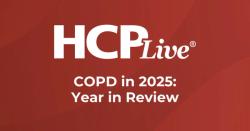
OR WAIT null SECS
Despite Increase in Use, Telehealth Not Enough to Address Gaps in Access to Care
Telehealth visits increased during the COVID-19 pandemic, with a peak in April 2020. About half of primary care visits were telehealth, but the percentage declined and stabilized to about 8% in late 2021.
Despite increases in use among patients who were female, Hispanic, or urban residents, a new study of telehealth use before and during the COVID-19 pandemic suggests telehealth is unlikely to close systemic inequities in access to care, even among those with access to high-speed internet.
“In the cases of age, sex, and geography, variation in telehealth uptake paralleled preexisting utilization trends suggesting that telehealth expansion is unlikely to close utilization gaps,” the investigators concluded. “In contrast, telehealth may offer a minor advantage in closing utilization gaps by race and education and may strengthen the utilization advantage among individuals with the lowest incomes.”
During the pandemic, telehealth became a readily used form of primary care, allowing patients to go to the doctors within the safety of their own home. According to prior research, about 20% of all US healthcare visits in 2020 were conducted through telehealth.2 Telehealth also provides other benefits other than safety—cutting health care costs, taking away barriers like geography and transportation, and helping to create flexible scheduling.1
To develop a greater understanding of the impact of increasing telehealth use on barriers to care, Alyssa Shell Tilhou, MD, PhD, of Boston University Medical Center, and colleagues launched the current study to examine the association of telehealth with primary care across sociodemographic characteristics like race, sex, age, education, income, and geography. The cohort study compared how many people switched from in-person doctor visits to telehealth visits before the COVID-19 public health emergency (June 1, 2019 to February 29, 2020), during the initial period (March 1, 2020 to May 31, 2020) and during the prolonged period (March 1, 2020 to December 31, 2021).
Obtained from the Wisconsin Medicaid Program, patients included in the study were nonpregnant, nondisabled, and aged 18 to 64 years old. The team measured change in primary care telehealth visits, specifically count, visit share completed by telehealth, percentage of in-person primary care decline due to telehealth. They also measured internet speed, defining high-speed internet as median block maximum download speed of 940 megabits per second or greater.
The study included 172,387 participants, with 59.7% female (n = 102,989), 60.2% non-Hispanic White (n = 103,848), 19.9% non-Hispanic Black (n = 34,258), and 8.7% Hispanic (n = 15,020). Investigators noted 60.5% (n = 104,239) were aged 26 to 45 years old, 66% (n = 112,355) lived in urban counties, 82.6% (n = 142,433) had access to high-speed internet, and 42.1% (n = 72,524) had a chronic condition.
Assessment of the pre-COVID-19 period revealed primary care visits were significantly higher for female than male participants, non-Hispanic White than non-Hispanic Black individuals, urban than rural residents, and patients with chronic disease. During the initial COVID-19 period, female patients had a 43.1% greater increase in telehealth visits than male participants (43.1%; 95% CI, 37.02% to 49.18%; P < .001) and this progressed to a 56.37% increase in the prolonged period (95% CI, 50.44% to 62.30%; P < .001).
Additionally, urban residents had a 63.87% greater increase in telehealth visits than rural parents (63.87%; 95% CI, 52.62% to 75.11%; P < .001). Hispanic participants also had a greater increase in telehealth visits than non-Hispanic White, with a 35.60% greater increase in telehealth visits (95%CI, 22.55% to 45.64%; P < .001).
Moreover, in the prolonged primary care period, telehealth visits increased 10.19% less for non-Hispanic Black individuals than for non-Hispanic White individuals (95% CI, −17.37% to −3.00%; P = .005). In contrast, non-Hispanic Black individuals demonstrated a greater increase in telehealth care (initial: 5.44; 95% CI, 4.07 to 6.81; P < .001; prolonged: 0.94, 95% CI, 0.26 to 1.62; P = .007).
Participants with high-speed internet had a greater increase in telehealth visits than those with low-speed internet (55.23%; 95% CI, 42.26% to 68.20%; P < .001). Even before COVID-19, individuals with high-speed internet had greater primary care visits (difference, 0.028 visits; 95%CI, 0.025 to 0.032 visits; P < .001) than individuals without high-speed internet.
Further analysis indicated individuals with chronic disease had a 188.07% greater telehealth visit increase In the initial period (95% CI, 175.27% to 200.86%; P < .001), which persisted to the prolonged period (95% CI, 174.08% to 196.65%; P < .001).
Although individuals with more education had greater visit rates prior to COVID-19, there was no significant difference in visit counts between education levels post-public health emergency. However, the greater education group demonstrated a smaller increase in telehealth share (initial public health emergency: −3.68 percentage point difference; 95%CI, −5.06 to −2.29 percentage point difference; P < .001; prolonged public health emergency: −1.13 percentage point difference; 95% CI, −1.85 to −0.42 percentage point difference; P = .002). Assessment of income showed those in the highest income group demonstrated a reduced visit rate than the lowest income during the pre-public health emergency (difference, −0.010 visits; 95%CI, −0.016 to −0.005 visits; P < .001). In contrast during the initial (difference, 9.45%; 95%CI, −15.58%to −3.32%; P = .003) and prolonged (difference, 18.85%; 95% CI, −23.19% to −14.52%; P < .001) period, individuals with the lowest income showed greater telehealth uptake.
“Although telehealth expansion has been touted as a low threshold policy intervention to expand access to care, leveraging telehealth to improve access for underserved populations will require more nuanced attention to the specific mechanisms linking telehealth and health care utilization to avoid inadvertently deepening disparities for select populations,” investigators added.
References
- Tilhou, A, Jain, A, DeLeire, T. Telehealth Expansion, Internet Speed, and Primary Care Access Before and During COVID-19. JAMA Network. 2024;7(1):e2347686. doi:10.1001/jamanetworkopen.2023.47686. Accessed January 5, 2024.
- Shaver J. The State of Telehealth Before and After the COVID-19 Pandemic. Prim Care. 2022;49(4):517-530. doi:10.1016/j.pop.2022.04.002


